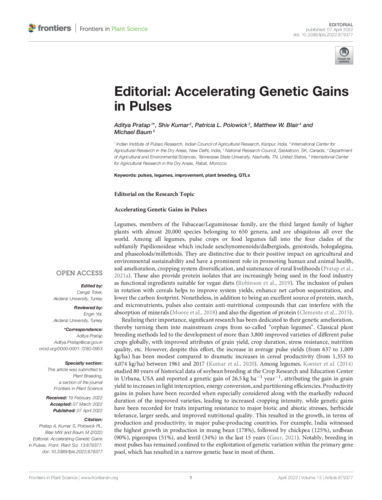Editorial: Accelerating Genetic Gains in Pulses
Abstract
Legumes, members of the Fabaceae/Leguminosae family, are the third largest family of higher plants with almost 20,000 species belonging to 650 genera, and are ubiquitous all over the world. Among all legumes, pulse crops or food legumes fall into the four clades of the subfamily Papilionoideae which include aeschynomenoids/dalbergiods, genistoids, hologalegina, and phaseoloids/millettoids. They are distinctive due to their positive impact on agricultural and environmental sustainability and have a prominent role in promoting human and animal health, soil amelioration, cropping system diversification, and sustenance of rural livelihoods (Pratap et al., 2021a). These also provide protein isolates that are increasingly being used in the food industry as functional ingredients suitable for vegan diets (Robinson et al., 2019). The inclusion of pulses in rotation with cereals helps to improve system yields, enhance net carbon sequestration, and lower the carbon footprint. Nonetheless, in addition to being an excellent source of protein, starch, and micronutrients, pulses also contain anti-nutritional compounds that can interfere with the absorption of minerals (Moore et al., 2018) and also the digestion of protein (Clemente et al., 2015).

